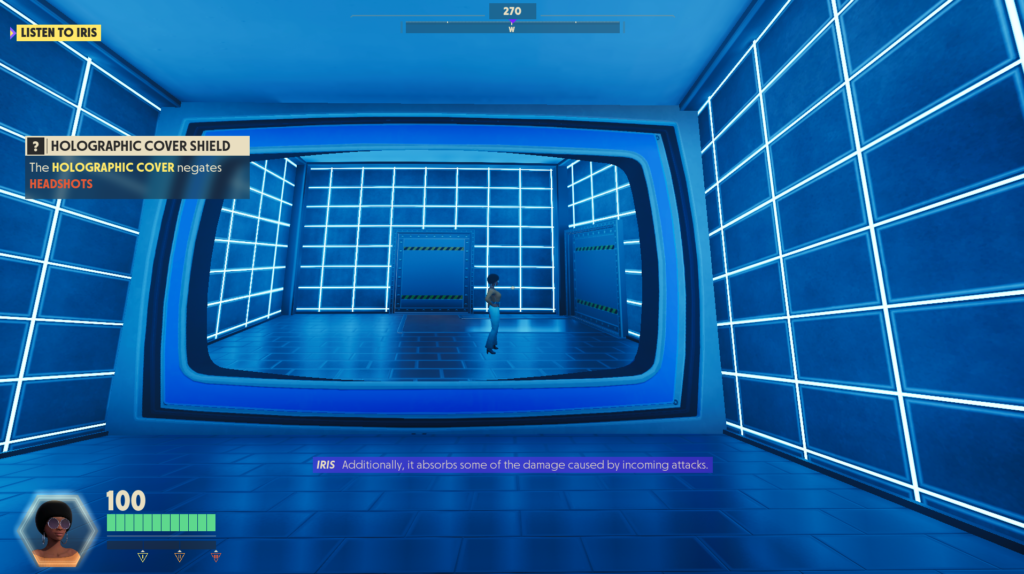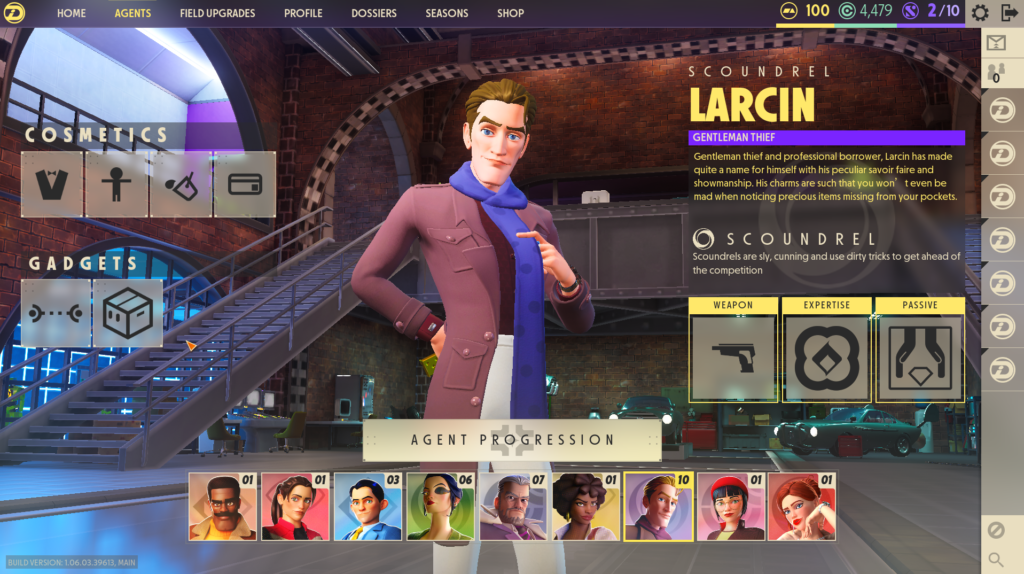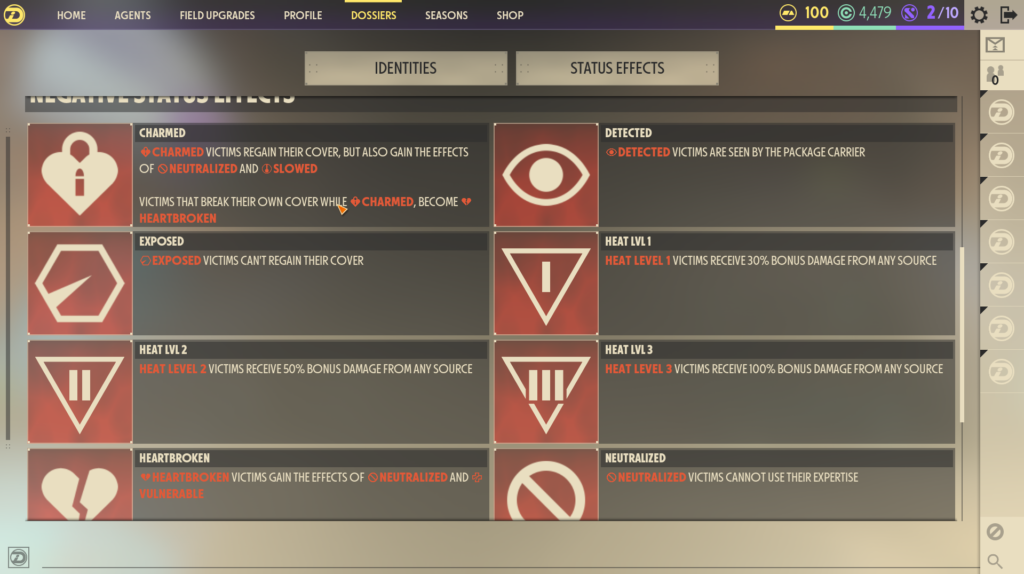Deceive Inc is out. This game’s been on my watch list for a while, mostly based off playing the demo a while back. I’ve managed to rack up 30 hours so far, and I’m ready to give my thoughts. I do like Deceive Inc, and I recommend it. BUT.
In what feels very appropriate, I don’t think Deceive Inc is actually the stealth game it might first appear to be. Or, at least, it’s not quite a stealth game at its core. So let’s talk about that.

Deceive Inc’s Deception
Deceive Inc falls into a lot of genres. It’s a multiplayer stealth action game with battle royale and hero shooter elements.
However, it’s the shooter part that I really want to focus on. The shooting is the most important game mechanic underpinning everything else in Deceive Inc. It’s not what you’ll be spending most of your time doing, necessarily, but it is required for victory. Which brings me to my one big point: if you do not like first person shooters, you will not like Deceive Inc.
If you do enjoy first person shooters, though, you will find this one of the most interesting and unique takes on the battle royale genre that’s been done so far.
More on that later. For now, let’s talk about the general flow of a game of Deceive Inc. Players take the role of spies infiltrating one of several expansive maps, attempting to escape with a briefcase, while avoiding being killed by NPC guards and other players.
I won’t be talking about the AI guards much from here on out. They serve the same purpose as AI in Hunt: Showdown. They’re not actually much of a threat except that drawing their attention them will alert other players to your presence.
Note: Between when I started writing this, and it getting put up on the blog, Deceive Inc has added a new class of NPC called the Elite Guard who are noticeably more lethal. Still not a threat on their own, but absolutely can become a problem in larger firefights.
Fortunately, avoiding the NPC guards is incredibly easy. Deceive Inc has a disguise system called cover. Cover lets a player copy the appearance of any character they can see and stand next to. As long as you have cover that matches the appropriate area, guards will never shoot you.
Author Note: The actual functionality for cover is incredibly interesting. The character other players see doesn’t actually mimic your movement 100%. Instead, it just faces the direction you last moved. This means that you can look around wildly without giving yourself away as a human player. You can also walk backwards to watch behind you, while giving the impression you’re looking in the direction you’re moving.

Cover is broken when you shoot or get shot enough, or if you’re seen for too long in a forbidden area. For example, a staff member cover won’t last long in a guard area.
The primary threat to success is other players, and the actions they take. I have a whole side writeup about the meta strategies currently in vogue.
What Deceive Inc Does Well
Deceive Inc absolutely nails the 70’s spy aesthetic. Every map and character feels like they just stepped out of a portal from the James Bond or Austin Powers movies. There’s a fun but not overwhelming retro-tech theme, and the sound effects and music fit incredibly well. (Casino map when Sweat Bandits?)

The gunplay is solid, if a bit unusual compared to many other shooters. Time to kill is fairly high, and takes some getting used to. So do some of the behaviors around aiming. Each character also only has a single gun. But in the long run, the biggest difference from most shooters are the activated abilities.
Deceive Inc also has one of the best respawn mechanics that I’ve ever seen in a battle royale. There’s no respawn or bleed out. Instead, downed teammates can always be revived as long as they don’t leave the game. The catch is that each respawn brings them back with lower and lower max health. This rewards quick pickoffs and disengaging, but it’s still always possible to stage a comeback.
The spy and sneaking mechanics are fun and flavorful. Unfortunately, for reasons I wrote about in another post, really trying to blend in and be stealthy isn’t quite the best way to play the game. Even so, the sneaking absolutely sell the fantasy of being the high tech secret agent. The devs have indicated that they’re trying to make the game be a bit more punishing of run and gun, and have released patches to encourage that, so we’ll see how it goes in the long run.
Friction Points and Annoyances
In-game, I have very few annoyances with Deceive Inc. That said, I would really like to be able to see kill replays, and would love to see damage breakdowns upon death. Even after playing for 25 hours, I still often don’t understand how I was spotted out and killed. This makes learning really hard.
In addition, there are a bunch of small things in Deceive Inc that aren’t explained super well. These include various status effects, debuffs, and how specific weapons work. The information is present in the game, but it’s just not super easily exposed. The most recent update added a glossary which I like, but it could still do a bit more.

Out of the actual gameplay, I have one big complaint, and a few minor ones. The biggest complaint is the matchmaking.
The matchmaking is bad.
I recognize that a small player base leads to tradeoffs in order to keep queue time down. That said, getting matched into someone who has played 15 times as much as me feels bad. Getting matched into a whole team of players with that much time played felt even worse. The lack of death breakdowns and kill replays means it’s not possible to even learn from this kind of absolute butchery.
Also, I don’t love that in a game I already paid $20 for, there’s a battle pass on release. Blah blah, server expenses, blah blah, live service. But look. I already gave you $20. C’mon.
Conclusions
Do I recommend Deceive Inc? As long as you enjoy first person shooting mechanics, yes.
Everyone I’ve played this game with so far has enjoyed it, and played more with me, which is ridiculously high bar all things considered. It definitely has pain points, and bunch of unique mechanics that can make it a bit difficult to learn, but I’ve never played anything quite like it.
